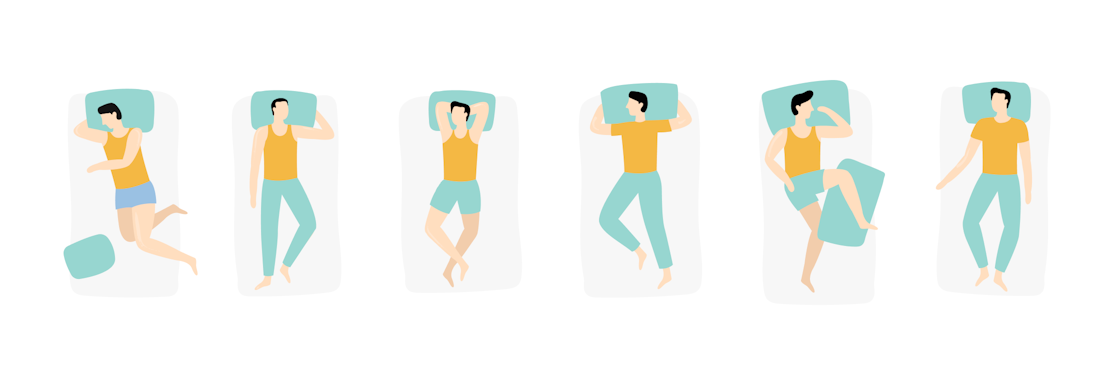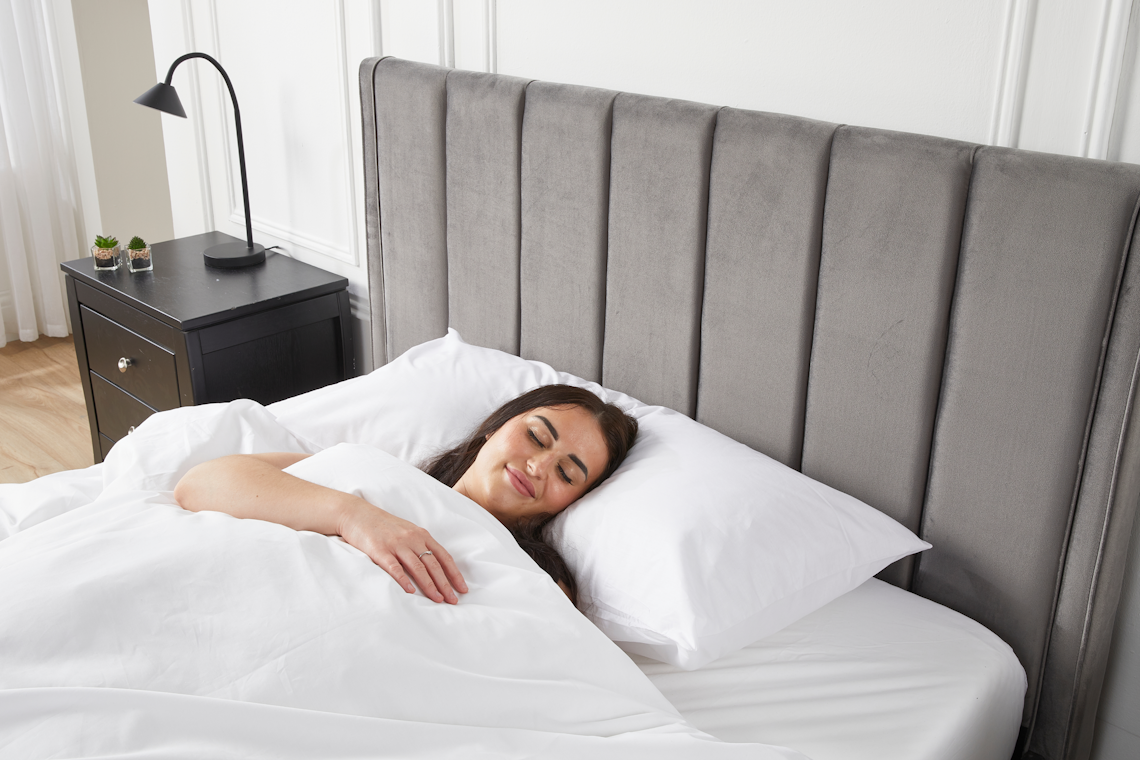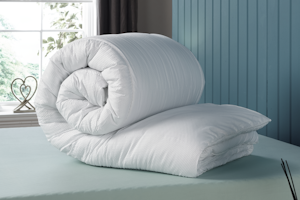30 Jun 2025

What Sleeping Position Is Best for You and Why?
12 Apr 2024
Finding the ideal sleeping position is not only about comfort, it's also crucial for your overall health and well-being. Your choice of sleeping posture can impact various health conditions, from snoring to heartburn, and even affect the quality of your neck and spinal health. While preferences can be subjective, there are general guidelines that can assist you in discovering which sleeping position may suit you best and why.
Side sleeping is widely recognised as one of the most beneficial positions. It's known to alleviate snoring and is often recommended for those with obstructive sleep apnoea. Furthermore, if you experience heartburn or acid reflux, sleeping on your left side can help keep stomach acid from rising into your oesophagus, providing relief from these conditions.
Conversely, while many find stomach sleeping comfortable, it is generally considered the least beneficial for back support. This position can place a strain on your spine and neck, potentially leading to long-term pain or discomfort. Moreover, sleeping on your back, although not as problematic, can still cause issues for certain individuals, such as those in the latter stages of pregnancy or people with severe snoring or sleep apnoea. Hence, it's important to consider your personal health needs when selecting a sleeping position.
Understanding Sleep Positions
Selecting the right sleep position is critical for your overall health. It can impact snoring, heartburn, and back pain.
Back Sleeping
When you sleep on your back, it allows your head, neck, and spine to rest in a neutral position. This means there's no extra pressure on those areas, which can help reduce pain and keep your spine aligned. Sleeping on your back also minimises the potential for wrinkles because your face isn't pressed against a pillow.
Pros:
- Reduces neck and back pain
- Minimises pressure on your skin
Cons:
- Can increase snoring

Side Sleeping
If you're a side sleeper, you're in good company – it's the most popular sleeping position. Side sleeping is beneficial as it may reduce snoring and is better for those with obstructive sleep apnoea. Additionally, it can alleviate heartburn and is often recommended for pregnant women.
Pros:
- May reduce snoring and sleep apnoea
- Can alleviate heartburn
- Recommended during pregnancy
Cons:
- Can cause shoulder and hip pain

Front Sleeping
Front sleeping, or lying on your stomach, is the least common sleep position. It can be helpful if you're experiencing a bout of snoring or if you prefer this position despite the potential downsides. Nevertheless, it's not typically recommended because it can lead to neck and back pain as your spine is not in a neutral position.
Pros:
- Can ease snoring in some cases
Cons:
- Leads to neck and back pain
- Puts pressure on muscles and joints

Health Implications of Sleep Positions
Your chosen sleep position can significantly impact various aspects of health including spinal alignment, breathing during sleep, and digestion.
Spinal Alignment
For maintaining good spinal alignment, sleeping on your back is ideal. This position supports the natural curvature of your spine, neck, and head and can mitigate back pain. On the other hand, if you prefer the side position, it's crucial to use a supportive pillow to maintain neck alignment and consider placing a pillow between your knees to alleviate pressure on your hips.
Breathing and Snoring
Sleeping on your side can greatly benefit your breathing and reduce snoring. This is particularly true for those suffering from obstructive sleep apnoea or during pregnancy where side sleeping, especially on the left, is recommended to improve circulation and prevent pressure on the inferior vena cava. Meanwhile, back sleeping can sometimes worsen snoring and breathing difficulties because of the potential for your tongue and soft palate to obstruct the airway.
Digestion
The position in which you sleep may have an influence on your digestive system. Sleeping on your left side is believed to aid digestion and may alleviate heartburn and acid reflux. This is due to gravity's role in facilitating the movement of waste through the ascending colon and the position keeping the stomach and oesophagus in an optimal alignment, reducing the risk of stomach acid entering the oesophagus.

Choosing the Right Pillow and Mattress
In choosing the right pillow and mattress, your aim is to maintain a neutral spine alignment and prevent discomfort during sleep.
Pillow Support for Neck and Head
Your pillow should support your head and neck in such a way that they align neutrally with your spine. Side sleepers typically require a high loft pillow that maintains the head's elevation and prevents the neck from bending awkwardly. Look for pillows with enough firmness to support this position such as the Downland Side Sleeper Pillow. Conversely, stomach sleepers often need a flat, softer pillow to keep the head and neck aligned without excessive elevation, thus avoiding back strain.
Mattress Firmness and Support
The firmness of your mattress should correspond to your weight, sleep position, and personal comfort preferences. A good mattress will support the natural curvature of your spine. For example, side sleepers may benefit from a slightly softer mattress that accommodates the hips and shoulders, while back or stomach sleepers often need a firmer surface to maintain proper alignment. Here's a simple guide to help you determine the suitable firmness:
- Side Sleepers: Medium-soft to medium-firm
- Back Sleepers: Medium-firm to firm
- Stomach Sleepers: Firm
Remember to replace your mattress roughly every 7-8 years to ensure it continues to provide adequate support.

Frequently Asked Questions
Which sleeping posture is most beneficial for overall health?
The most beneficial sleeping posture for overall health is typically lying on your back or side. Back sleeping is advantageous for neck support and reducing nasal congestion, whereas side sleeping may diminish snoring and relieve heartburn.
Is there a recommended side to sleep on for better health outcomes?
Sleeping on your left side is often recommended for better health outcomes. This position is thought to improve digestion and circulation, and reduce heartburn and acid reflux.
How does sleeping position affect back pain, and what is the optimum orientation?
Your sleeping position can significantly affect back pain. An optimal orientation is to sleep on your back with a pillow under your knees or on your side with a pillow between your knees, both of which maintain spinal alignment and reduce pressure on your back.
Can the position in which you sleep influence blood flow and how?
Yes, your sleep position can influence blood flow. Sleeping on your side, especially on the left, is thought to encourage better blood circulation due to the position of your body’s anatomy and gravity's influence on blood flow.


